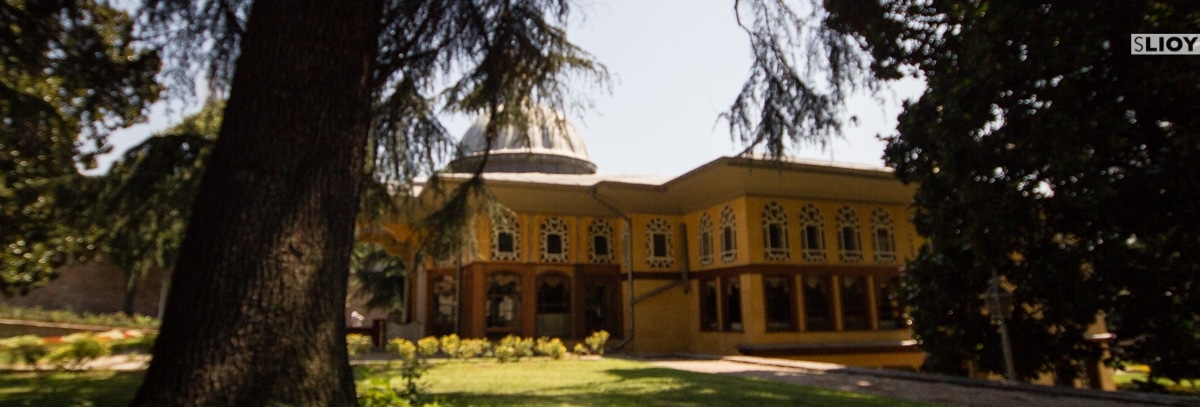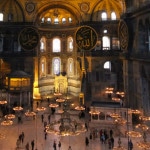Aynalikavak Pavilion – The Ottoman Sultan’s Garden
Much like the magnificent Beylerbeyi Palace on the Asian shore of the Bosphorus, the AynaliKavak Pavilion stands as a forgotten reminder of Ottoman power in the middle of an otherwise quiet neighborhood on the Golden Horn. While places like the Topkapi Palace and Hagia Sophia get millions of visitors each year, Aynalikavak gets barely a trickle of that. When I visited, in the height of the August tourism season, I was literally the ONLY tourist there.
Which speaks a little bit, actually, to both the history of the Aynalikavak Palace and why you would even consider visiting it today. Though once a grand and sprawling summer palace all along the shore of what is now the Hasköy neighborhood, the growth of the Ottoman Empire and the need for an increasingly large naval power saw the palace destroyed bit by bit to make room for expanding shipyards. The only reason the present-day Aynalikavak Pavilion was spared, really, was so that the Ottoman Sultans would have a place to rest and receive visitors while they were here to inspect the progress of the Ottoman Navy.
Though the pavilion was actually constructed around 1703, the current iteration is distinctly remnant of the Tulip Period, which ended in 1730. An era of intellectual and cultural development for the Ottoman Empire. Though the name derives from the popularity of the flower among Ottoman elites, it was more remarkable as a time when the court was open to the influences and culture of both the Islamic and European cultures. Even this is, in a way, still apparent in the furnishings of the Pavilion. While some rooms sport the traditional Turkish low couches, others are full of stuffy Victorian-looking chairs that might seem right at home in your grandmother’s sitting room.
More than any other person, Aynalikavak was and is associated with Sultan Selim III. Aside from being a progressive reformer and ruler, Selim III was also an accomplished musician and composer. It was here, at Aynalikavak, that he is believed to have shut himself away from the world as he composed some of the creations that still stand as the most famous examples of classical Turkish music. Appropriately, then, the Pavilion hosts a permanent exhibition of Ancient Turkish Instruments in his honor.
Even as a modern-day visitor, it seems like Selim III had it right. The Aynalikavak Pavilion is beautiful, to be sure, but not grand in the sense of Dolmabahce or Topkapi. Rather, this is a place to get away from the bustle of the city center and hide in a quiet garden for a few hours. Who knows, behind these thick walls and away from the usual tourist traffic of Istanbul perhaps you’ll even find a bit of inspiration for your own creative side.
Essential Info
Hours:
Open every day except Monday and Thursday 8:30 – 16:30 (17:00 in summer).Admission:
5 TL (Which includes the mandatory guide for a tour of the Pavilion interior.)Transportation:
Though there are busses that run through Hasköy from Eminonu, the better way to get here is on the Haliç (Golden Horn) ferry. Check that link for a current schedule, but at the time of writing this ferry leaves from the dock at Karakoy at around :45 past the hour and arrive at Hasköy around twenty-five minutes later.
Are you traveling through Istanbul soon? When I’m in town I generally stay at the Agora Guesthouse in the Sultanahmet area, but there are plenty of hotels in Istanbul to choose from.











What a beautiful building! Something I’ve always found fascinating in stately (or general grandiose buildings) is that often the most interesting part of a room is the ceiling!
I had a similar experience of being alone in a palace recently in Marrakech at the Palais Badiî – it was infinitely better than sharing the experience with hoards of snapping tourists though.